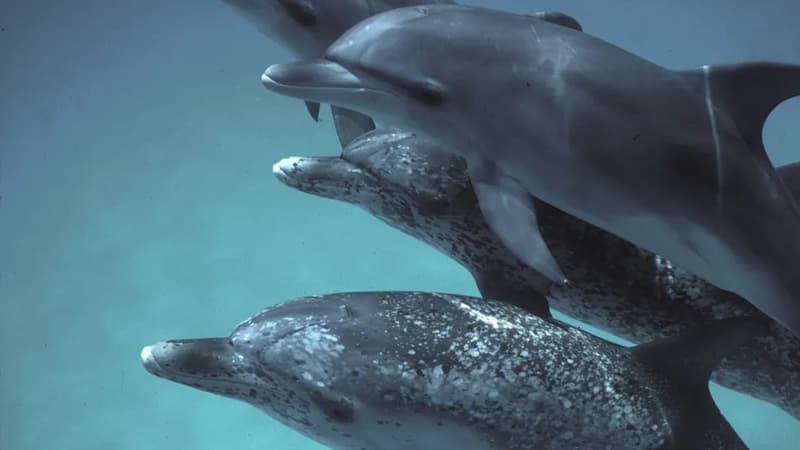Talk to dolphins. This is currently impossible, these mammals recognized for their intelligence with a complex communication system, including clicks, whistles and pulses. However, it is the Google project that, on the occasion of National Day Dauphin on April 14, presented the advances of its great language model.
Called Dolphingemma, the latter is based on the knowledge of Gemma, the company of open models of the company designed with the same research and the same technology as those that supply Gemini models.
Developed in collaboration with researchers from the Georgia Institute of Technology and the non -profit organization Wild Dolphin Project (WDP), was trained to learn “the structure of the vocalizations of the dolphins and generate new sound sequences similar to those of the dolphins,” Google said in a blog article.
Create a shared vocabulary
More specifically, Dolphingemma has been trained in the WDP database, which carries out a Dolphin research project by studying a specific Atlantic community since 1985. This vast base includes “decades of videos and submarine sounds associated meticulously with the identity of the Dolfins, its history and their observed behaviors.”
Using Google audio technologies, it deals with natural dolphin sound sequences to identify models, models and structures and predict the following probable sounds in a sequence.
Thanks to this identification, Dolphingemma “can help researchers discover hidden structures and potential meanings in the natural communication of dolphins, a task that previously required immense efforts by humans,” said the company, while WDP began to display the model on the ground. Ultimately, this could create a shared vocabulary with Dolphins to interact with them, he said.
In addition to this model, the WDP and the Georgia Technology Institute also work on an underwater computer designed to “create a simpler common vocabulary.” Operating with the smartphones of Google pixels, this system called chat (telemetry to listen to the audience of the cetaceans) is based on the association of new synthetic sieves with elements that the dolphins appreciate (Herbarium Sea, Sargasse …). Researchers expect dolphins to learn to imitate these whistles to ask for these objects.
Source: BFM TV


